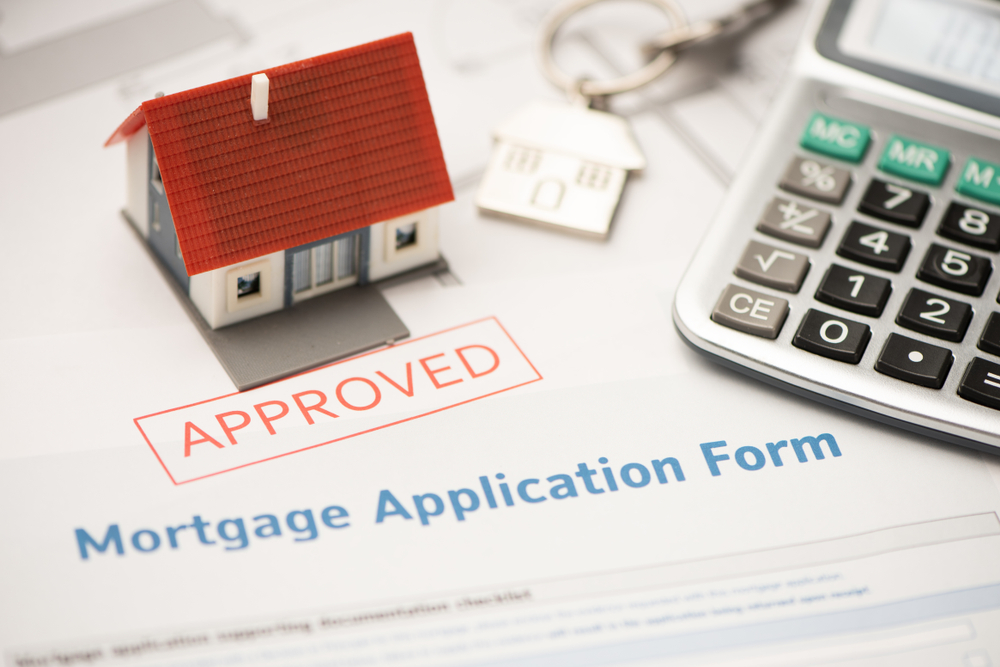It is an interesting time for potential homebuyers to consider the 2024 property market in Texas. The Lone Star State is a highly dynamic economy with diverse real estate options, and buyers can find ample opportunities here for their next home.
Nonetheless, first-time buyers might face challenges navigating through the process of purchasing houses. This article provides an overview of the ten most important steps that will make your experience run smoothly and successfully when you purchase your next home in Texas this year.
Texas has always boasted of its livable cities, breath-taking landscapes, and friendly communities. As it keeps growing and changing, its housing market remains strong, with something for every buyer at any price level you may want, depending on whether you are looking for a small starter house, a large family one, or an extravagant mansion.
This article takes you through all the stages that are involved when buying a house in Texas, starting from evaluating your financial health up to finalizing the deal and moving in. With knowledge about these core steps as well as some unique attributes of the Texan housing market, it is possible for you to make your 2024 homeownership dreams come true.
Step One: Assess Your Financial Health
Before embarking on the journey of buying a home; it is vital that you evaluate where your financial situation lies. You should begin by checking your credit score, because this determines if you qualify for a mortgage loan. While conventional loans typically require a minimum FICO score of 620, FHA loans have conditions under which you may qualify even with scores below 500 in Texas. Ensure you take necessary measures, like settling debts as fast as possible, while making sure all accounts receive payments timely so that yours could be improved if it appears low.
Apart from credit scores, lenders also consider how much debt relative to income (DTI) you have when assessing your mortgage application. A high DTI means that monthly debt payments are a large percentage of gross monthly income and most lenders prefer a DTI ratio of 43% or lower. For instance, before buying a home, it would be necessary to focus on reducing debts with high interest rates and avoid other borrowing.
You should also take into account your present financial status, which comprises income, spending and savings. Evaluate your budget and identify areas where you can cut back on expenses in order to increase the amount saved for down payment as well as closing costs. It may be helpful to talk with a financial planner or housing counselor who will assist you in outlining some strategies towards meeting your homeownership objectives as well as the purchasing process.
Step Two: Deciding Down Payment and Closing Costs
Assess the upfront prices associated with your Texas home purchase. Home loans can demand a down payment ranging from 3% up to 20%, depending on the type of loan and the financial capacity of the buyer. As an illustration, conventional mortgages call for at least a 5% deposit, while FHA loans accept a 3.5% minimum down payment threshold. Remember, making a larger down payment will protect you from paying high-interest rates as well as eliminate the need for private mortgage insurance (PMI).
In addition to your down payment, you will also need to budget for closing costs, which include charges or appraisals, title insurance, and other items. In Texas, closing costs are usually 2% to 5% of the purchase price of a home. To get a more accurate idea of possible closing costs, meet up with your lender or real estate agent, who can give you an itemized list of fees specific to your transaction.
To help cover these upfront costs, start saving early and explore down payment assistance programs available to Texas homebuyers. The Texas Department of Housing and Community Affairs (TDHCA) offers several programs, such as the My First Texas Home program, that gives first-time homebuyers 30-year fixed-rate mortgage loans and down payment assistance. Furthermore, many cities and counties in Texas have their own help that they offer, so make sure you research what is available in your target area.
Step 3: Get Pre-Approved for a Mortgage
Before you start house hunting, it is wise to get pre-approved for a mortgage. This means giving all the necessary financial information to a lender, who will then present you with a letter stating how much money they are willing to lend you. This stage helps you understand what your budget can allow but at the same time, it lets potential sellers know that they are dealing with someone serious and qualified.
To obtain approval, credit worthy documentation like proof of income, bank statements, tax returns and identification will be needed by lenders. Before determining whether to give a loan or not, you should have your credit history reviewed by the bank. It may be worthwhile to gather this paperwork ahead of time so as not to slow down the process.
When choosing a lender, shop around to compare rates, fees, and customer service. Try finding local lenders with deep knowledge of the Texas housing market, so they can guide you through these steps personally. Do not hesitate to ask questions when in doubt about any aspect of your pre-approval status, as this will help you make more informed choices when deciding on the mortgage product.

Step 4: Determine Your Budget
With your pre-approval in hand, it’s time to determine your budget. Consider not only the monthly mortgage payments but also the long-term costs of homeownership, such as property taxes, insurance, and maintenance expenses. In Texas, there can be a significant disparity in property taxes between different counties and cities, so ensure that you check out tax rates in your target areas and incorporate them into your budget.
Online home affordability calculators can give you a rough idea of how much you could afford based on your earnings, debts, and down payment. Please note that these are only general guidelines, and a financial advisor may provide you with a more personalized assessment of what should be your limit when purchasing property.
When determining your budget, do not forget to take into account potential interest rate increases that could affect monthly payments over time. While interest rates have been at historic lows in recent years, they can still move up or down depending on market conditions and other factors. You might want to test if rates go up, you are able to continue paying for your mortgage conveniently by calculating monthly payments for different interest rate scenarios.
Step 5: Start Your Home Search
Now the thrilling part of the home search begins. Start by researching communities that suit your lifestyle, budget, and choices. Also take into account factors such as commute distances to offices, schools, and other amenities; in addition to the overall safety and character of the area. Speak with locals as well as visit neighborhoods at different times to better understand a place within its community.
Use online real estate platforms to look through listings and get an idea of market conditions. Websites like Realoq have extensive information about available properties, including pictures, virtual tours, and exhaustive descriptions, among others. It is also possible for you to set alerts so that you are notified any time new listings matching your criteria go on sale.
Schedule physical visits for any properties you may be interested in just so you can get a feel for what the homes are all about and their surroundings. Pay attention to details such as the condition of the property, how space is laid out within the house, and even things like whether or not areas need a lot more work than others before purchase. A local real estate agent could be helpful in terms of insights on prospective houses, which provide support throughout the viewing process, from selecting offers until negotiation with sellers.
Step 6: Make an Offer
It is now time to make an offer once you have found the perfect Texas house for yourself. Depending on such factors as market conditions, the value of the house, or your financial situation, your realtor will help you come up with an attractive offer accordingly, as well as assist in drafting a purchase agreement that stipulates terms relating to the buying cost, and the closing date, among other things.
When making an offer, it’s important to include contingencies that protect your interests, like a home inspection contingency or a financing contingency. This would mean that if certain conditions are not met, such as major defects in the home or my loan falling through, you can back out of or renegotiate this deal.
Negotiation with a seller on issues such as the closing date or any repairs that the buyer would like them to complete before closing should not be a problem. Depending on the seller’s position and the market situation, your realtor will guide you on the most profitable way to negotiations. Get ready for some bargaining back and forth as you seek out common ground while focusing on what is essential for your pocket.
Step 7: Conduct Home Inspections and Appraisals
After an offer is accepted, it is vital to have a comprehensive home inspection conducted. A qualified inspector must evaluate the property’s condition, including the building structure, systems, appliances, and items that might pose significant safety hazards. They will give you a detailed report outlining any problems or areas of concern so that you can make an informed decision on whether or not to buy.
Where there are serious issues revealed in the inspection, like the presence of a faulty foundation or aging electrical wiring, one may negotiate with the vendor regarding rectification prior to closure or adjust the purchase price accordingly. To enable the smooth running of these talks and secure your interest, consult your real estate agent.
Your lender will typically require an appraisal as well as a home inspection to make sure that the value of the house is consistent with the amount of the loan that you applied for. An appraiser will look at aspects like size, location, and the condition of the property in order to determine its fair market value. If appraisal is lower than the purchase price, you may have to renegotiate with the seller or increase your down payment.

Step 8: Finalize Your Mortgage
With the inspection and appraisal done, it is time to finalize your mortgage. Work closely with your lender, providing any additional documentation they request, such as updated bank statements or proof of insurance, and also locking in your interest rate. By locking your rate during the closing process, you manage to protect yourself against a potential increase in rates, thereby giving yourself peace of mind while at the same time helping you budget accordingly.
Ensure that you understand all terms of your loan, including the type (conventional, FHA, VA or USDA), interest rate, and fees associated with it. Also, ensure that you review your loan estimate carefully, which outlines key terms and costs associated with mortgages. Ask your lender for clarification on any matters that are not clear to you.
Think about long term effects of choosing one mortgage over another, such as total interest paid throughout the lifespan of a loan, and also foresee private mortgage insurance PMI if less than 20% is used in the down payment. Your lender can help you weigh out various options and select one that suits your financial situation best, considering both short-term and long-term goals.
Step 9: Prepare for Closing
When the closing date approaches, go through lenders’ and attorneys’ provided closing documents before attending actual meetings. These documents are inclusive of the final costs attached to purchasing a house, such as those related to prorated property taxes, mortgage interest rates, and other amounts payable during the closure process. Ensure that these documents are read carefully by asking questions where they are unclear.
Three business days before your scheduled closing date, your lender should give you a Closing Disclosure. This document gives a summary of the final terms of your loan, including interest rate, monthly payments and total closing costs. Compare this document with your initial loan estimate to ensure there are no surprises or inconsistencies in it.
If you are buying a home for the first time or have little money for closing costs, find out about assistance programs available in Texas, like the Texas State Affordable Housing Corporation’s down payment and closing cost assistance programs. Given that qualified buyers may receive grants or get low-interest loans to cover these upfront costs, these programmes make homeownership more affordable.
Step 10: Move In and Post-Purchase Responsibilities
Congratulations! You’ve completed all the processes needed to purchase a house in Texas. Take several steps after closing to move into your new home, such as setting up utilities, changing our mailing address and planning for moving.
You might consider having the locks rekeyed at your new residence; by doing so, you will be ensuring that no one else has access to it other than yourself. Additionally, you can opt for deep cleaning of the place or do any necessary repairs if any like painting or also start making it resemble what pleases you most at personal level before settling here as well as making it look like yours.`
Regularly maintaining your new home, paying taxes on it, and insuring it are some of the many responsibilities that come with being a homeowner. Develop a budget for the upkeep of your home and put away money every month to cater for such expenses. Keep tabs of important dates like when property tax is due or when insurance needs to be renewed so that you do not get charged late fees or lose out on coverage.
Think about how these costs can be managed comfortably over an extended period. This might mean tweaking your budget, beefing up your emergency fund or exploring strategies to increase income flow. Through proactive planning and knowledge, you can take full advantage of homeownership while minimizing financial strain.
Own Your Next Texas Home
Purchasing a house in Texas in 2024 can be exciting and fulfilling. With these ten steps and constant information search, you will have all it takes to spot and acquire the home you always wanted. Remember to consult your real estate agent, mortgage lender, or attorneys when necessary, and never hesitate to ask questions along this path either.
Texas’ housing market features a variety of options for different types of buyers at different stages of their lives, depending on what their budgets would allow them. There is a perfect home for every person who wants one, whether they are first-time buyers, growing families who need bigger homes, or empty nesters interested in smaller houses.
Keep focused on your goals as you start the process, and trust that everything will work out eventually. Make sure you have patience during this journey towards owning your Texas home. You will soon be moving into your new Texas abode having planned ahead sensibly, observed caution, and had the right support system, so you are ready to begin another chapter in your Lone Star State journey.


